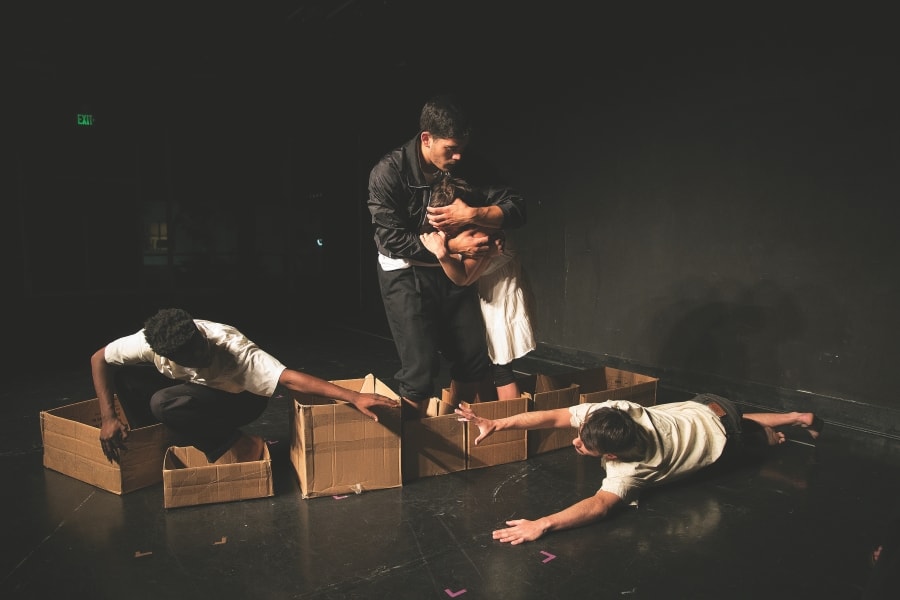In the last decade, more American theatre companies are following the lead
of Europeans who’ve implemented permanent training programs into their yearly repertoire. Long-term working relationships and the routine practice of holistic ensemble training can make for stronger artistic partners and more truthful performances.
Meanwhile, universities and education programs are likewise emphasizing the importance of both somatic and cerebral training. There is no one method or pedagogy to make an actor’s toolkit complete, but a conglomeration of psychophysical methodologies from around the world, from masks to rasaboxes, biomechanics to Laban movement, have found their way into mainstream American theatre training. The listed 10 programs below vary in focus and technique, but all provide a look at how actors can work to integrate mind, body, and spirit.
Dell’Arte International School of Physical Theatre in Blue Lake, Calif. boasts a full-time physical theatre training program with actors at the center of devised creation. The company offers a three-year Masters of Fine Arts degree, in which students delve into melodrama, clown work, and ensemble devised projects. The professional training program is a one-year course for actor-created work, in which students practice improvisation, dance, yoga, voice work, mask, and the company’s namesake commedia dell’arte. A condensed three-week summer intensive is offered for actors looking to immerse themselves in the company’s methodologies of combining the physical world with the natural world, by connecting acting partners, characters, and masks through both spatial awareness and movement. Dell’Arte also offers theatremakers of all disciplines, with no prior Dell’Arte training required, the opportunity to travel to Bali, Indonesia, to experience the Balinese culture and study mask carving, shadow puppetry, and traditional Balinese dance on the island.
Character work and playmaking are at the core of Philadelphia’s Pig Iron Theatre Company’s training. The company’s clown work and creative collaborations are for more than just the stage: Yearlong residencies and workshops are available to school programs and businesses to learn about how an ensemble-based performative approach can boost confidence, promote leadership, and bring a competitive edge to a business. If a degree is what you’re looking for, the Pig Iron School has partnered with the University of the Arts to offer a two and a half year MFA in devised performance and also a two-year Advanced Performance Training certificate program integrating the teachings of Jacques Lecoq, Joe Chaikin, and Teater Slava. Also, an annual three-week summer session teaches red-nose clown techniques and hones in on the company’s year-round pedagogy of storytelling and playfulness.
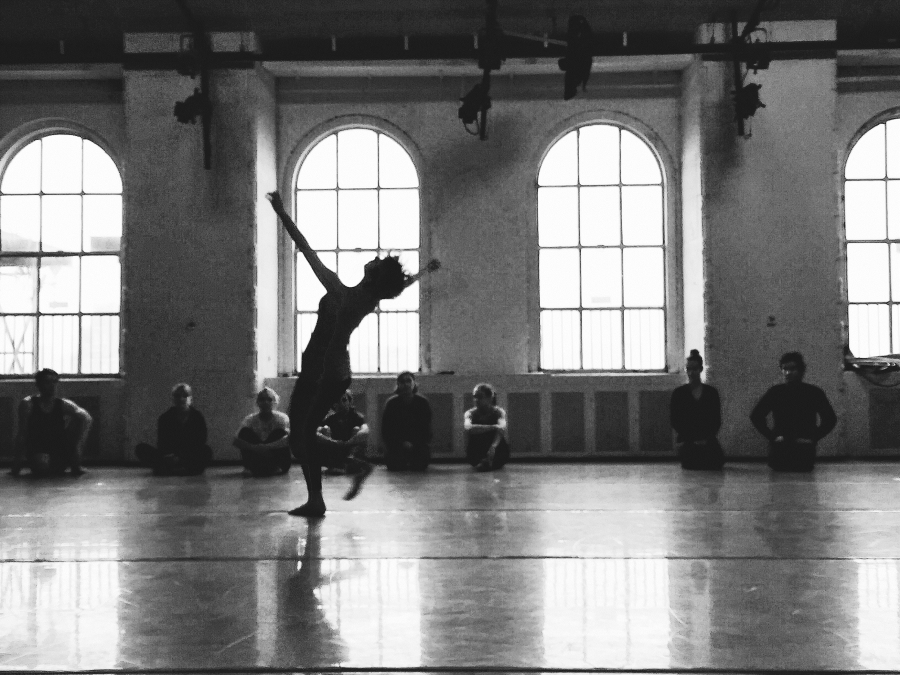
SITI Company in New York City was founded in 1992 by Anne Bogart and Tadashi Suzuki, and became the gateway of Suzuki’s physical acting training from the village of Toga in Toyama, Japan into the United States. The rigorous training methods of Suzuki —combining martial arts, Greek theatre, and movement— are paired with the dance-based training of choreographer Mary Overlie’s Viewpoints method to create a program that is described as the “gymnasium for the soul.” SITI offers a biennial conservatory program, seasonal training sessions ranging from two to seven weeks in length, a weekend master class series, a summer intensive at Skidmore College in Saratoga Springs, N.Y., and workshops around the globe. Said founding member and co-artistic director Ellen Lauren, “Much like a musician or classical dancer can measure themselves against criteria to realize their potential, the training develops the inner landscape of the artist as well as external expressiveness and technical skill.”
California Institute of the Arts in Valencia, Calif., has an acting program with a focus on physically based training, with an emphasis on connecting the mind and the body in its BFA and MFA programs. CalArts School of Theater offers students Grotowski method movement classes, Roy Hart voice technique, and dance. This past semester, students worked with director and choreographer Daniel Passer on a devised piece with elements of clown work and the film noir aesthetic. “Our training is grounded in the actor’s physical connection to the text, with both the body and mind as centers for intelligence,” says Nakati Garrett, associate artistic director of the CalArts Center for New Performance. “In skills classes, scene work, and projects, our artists work towards creating a physical conduit to the material.”
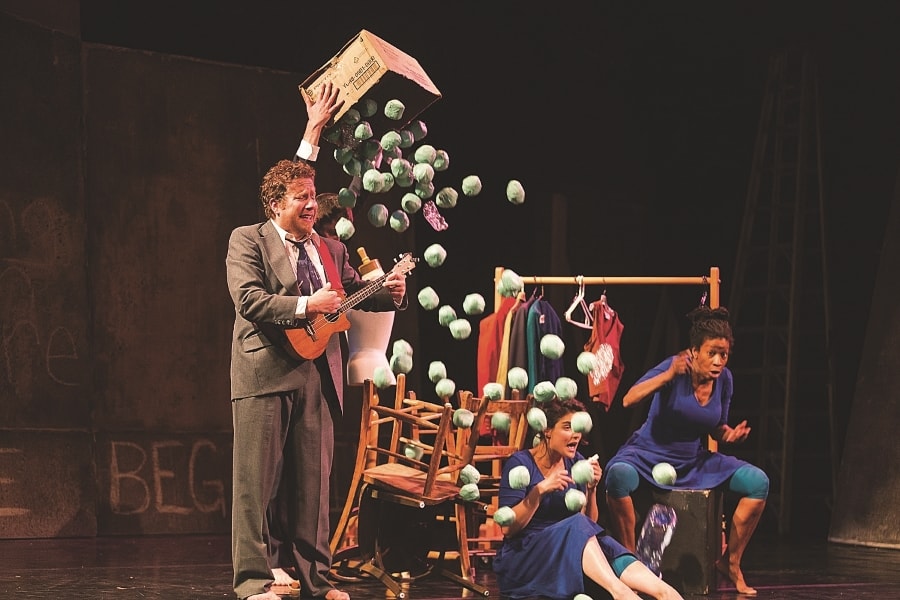
Theater Grottesco in Santa Fe, N.M., was founded in Paris by Lecoq practitioners and transplanted to the U.S. in 1996. Professional residencies are available to theatres and universities, and master classes and workshops are open to the public to learn how to merge emotions and intellect with ensemble storytelling. Buffoon and Baal mask work are some of the offerings. The company opens the rehearsal doors for theatremakers of all disciplines and ages to experience the creation process of Theater Grottesco’s imaginative performances.
Synetic Theater in Arlington, Va., was founded in 2001 by artists from Georgia (the Eurasian country, not the Southern state) as a dynamic synthesis of the arts. The company’s productions are described as visceral experiences combining gymnastics, mime, and dance. Synetic produces mainstage shows and family-friendly productions and offers classes and workshops for innovative theatre artists of any age in mime, Laban movement, Shintaido martial arts, and stage combat. “Live theatre is growing and evolving so rapidly that movement training is essential for the contemporary actor,” says founding artistic director Paata Tsikurishvili. “Around the world, contemporary theatrical storytelling is more visual and physical, utilizing different acting skill sets to tell the story.”
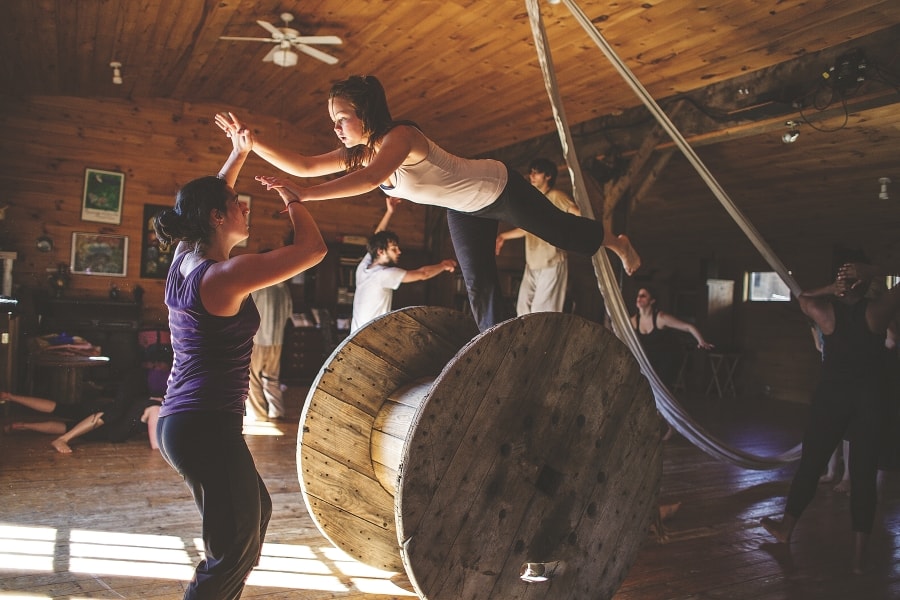
Training is the foundation of Double Edge Theatre in Ashfield, Mass., where theatre artists from around the world come to “the Farm” to get a total experience for the imagination, the body, and the voice. The vigorous training involves running, plastique postures, and working with large objects. The program, offered year-round as well in summer intensives and week-long immersions in the fall, also includes improvisation, dramatic etudes, and devised presentations. “Double Edge’s training programs are devoted to process—both of the participants and that of the Double Edge ensemble,” says actor and co-artistic director Matthew Glassman. “We give primacy to working with the body not to become athletic or virtuosic but as a channel for imagination, emotion, the voice, and metaphor.” The company’s original, immersive theatre performances take place in the company’s outdoor gardens and on the buildings to create a theatrical experience between the artists and the company’s cultivated audience—who are also invited to participate in monthly open training sessions.
The White Church Theatre Project in Spring Green, Wisc., is an outgrowth of London’s Theatre de L’Ange Fou International School of Corporeal Mime. The company’s home is a 1902 church, where lectures, films, performances, and a training program based on Étienne Decroux’s Corporeal Mime technique bring theatre artists from around the globe. The abstract and the spiritual aspects of performance are brought together through the “thinking body” of mime practices, as full-time training, private classes, and intensives teach the history, vocabulary, and theory of the discipline. Students learn to use their intuition to create solo and duet pieces inspired by the relationship between text and movement, time and space.
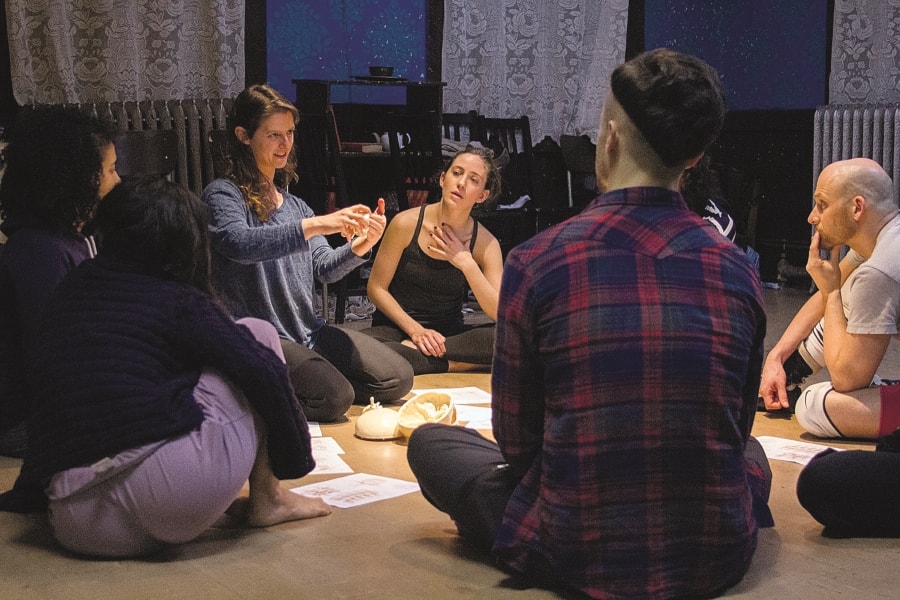
Third Rail Projects in Brooklyn is known for their immersive and site-specific works (including Then She Fell), which take audiences down a rabbit hole and through a hospital ward. The company also offers workshops for theatre artists to build their immersive theatre toolkit, with sessions focusing on the ability to control the voice through breath, sound, speech, physiology, and movement to adapt to the growing interest in immersive theatre in the U.S.
The MFA acting program at the University of California-San Diego offers students training in voice, movement, speech, and singing as a mode to free the physical body. First-year courses focus on imagination and emotion, following up with vocal and physical training aimed at classical works the second year, rounded out with individualized classes to prepare students for the professional world in the final year. Students also participate in at least one residency with the nearby La Jolla Playhouse during the course of their studies. “It is our aim to make sure that our graduating actors are ready for any physical challenge that comes their way in the professional world,” says acting professor Charlie Oats. “I also spend of good deal of time in rehearsal working with actors to connect what they’re doing in any particular play with what we’re learning in class. Perhaps most important, it is our constant goal to support and connect to the work being done in class by my acting, voice, and speech colleagues. We are all after the same thing: simplicity, honesty, passion, openness. A dynamic physicality should include all of these attributes.”

